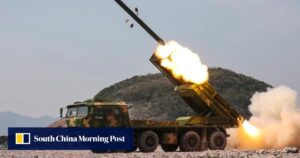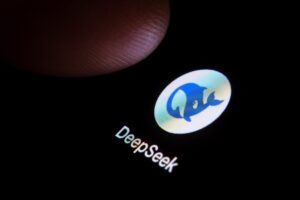Exploring the Rise of AI Incubation within China’s Quantitative Funds

The Rise of AI: DeepSeek and China’s Quantitative Funds
Introduction to DeepSeek’s Launch
In January, DeepSeek made headlines by launching an affordable, open-source AI large language model (LLM). This move signifies a noteworthy challenge to OpenAI, the current frontrunner in this field. DeepSeek’s development underlines China’s increasing dominance in artificial intelligence (AI), backed by the relatively lesser-known quantitative fund, High-Flyer Asset Management (Zhejiang) Co. Ltd.
High-Flyer Asset Management and DeepSeek
High-Flyer Asset Management, based in Hangzhou and led by stock trader and AI enthusiast Liang Wenfeng, played a crucial role in DeepSeek’s emergence. The firm’s AI chatbot originates from their application of AI algorithms designed for financial market strategies, highlighting the blend of finance and technology in modern AI advancements.
The Role of Other Quant Funds
Beyond High-Flyer, several other quantitative funds, including Ubiquant Investment and Beijing Renaissance Era Investment Management, are also diving into the AI and LLM space. Many of these firms are actively recruiting specialists to strengthen their AI capabilities as competition in the market intensifies.
Ubiquant’s Innovative Research
Ubiquant researchers co-authored a study showing they replicated DeepSeek-R1, introducing a unique method termed "Logic-RL." This approach enhances LLM reasoning via rule-based reinforcement learning (RL), demonstrating that sophisticated reasoning skills can be cultivated in LLMs through focused reinforcement learning. This can reshape previous beliefs regarding AI capabilities.
Different Stages of AI Model Training
Many Chinese quant funds are engaging at varied levels of AI model training. Firms like High-Flyer focus primarily on the costly pre-training of LLMs, while others are more involved in post-training, tailoring LLMs to specific industry needs—a process often referred to as developing models for vertical markets.
Significant Advances in Biomedical Fields
For instance, Renaissance Era is advancing AI applications in biomedicine through collaborations with research institutions. They currently have findings under review for the prestigious journal Nature, discussing a novel genetic hypothesis developed with AI assistance.
Funding Dynamics in AI Development
When comparing funding patterns, the US AI sector typically relies on major tech players, venture capitalists, and government funding. In contrast, Chinese technology firms, including Alibaba and Tencent, aim to enhance their business models without usually focusing on AI directly. However, Chinese quantitative funds have stepped up to fill the gap, propelling AI model development and compensating for venture capital and private equity variations that tend to avoid higher-risk AI investments.
Investment Philosophies in AI
DeepSeek’s launch has underscored the fundamental role of Chinese quantitative funds in spurring AI advancements. A representative from one of these funds pointed out a stark difference in investment strategies; Chinese venture capital and private equity backers prefer straightforward business models, unlike their US counterparts who are prone to invest in initiatives like OpenAI.
Data-Driven Research and AI in Quant Trading
Quant fund founders generally regard their firms as entities driven by data research. They naturally perceive the application of AI in quantitative trading as a logical progression. The math and computation focus of quant trading align seamlessly with the demands of AI research.
Founders’ Backgrounds and Technical Expertise
Many of these quant firms were launched by individuals with strong scientific and technical knowledge. For instance, Liang Wenfeng of High-Flyer uses his background in electronic and information engineering to navigate the financial markets, establishing DeepSeek to emphasize the development of advanced AI models.
Focus on Specialized AI Applications
While players like DeepSeek and Ubiquant prioritize resource-intensive LLM pre-training, other AI initiatives across China are focusing on more cost-effective post-training methods. This enhances models for specific tasks and improves their functionality through reinforcement learning feedback. Much like the wave of applications that emerged alongside operating system launches, these specialized AI tools harbor potential for widespread applications in various industries.
Maturity of China’s AI Ecosystem
Overall, China’s LLM sector has matured into a well-rounded ecosystem, evolving from early-stage pre-training to specialized applications. This marks a significant step toward the broader implementation of sophisticated AI tools in real-world scenarios, where their capabilities are increasingly ready to meet diverse industrial needs.





